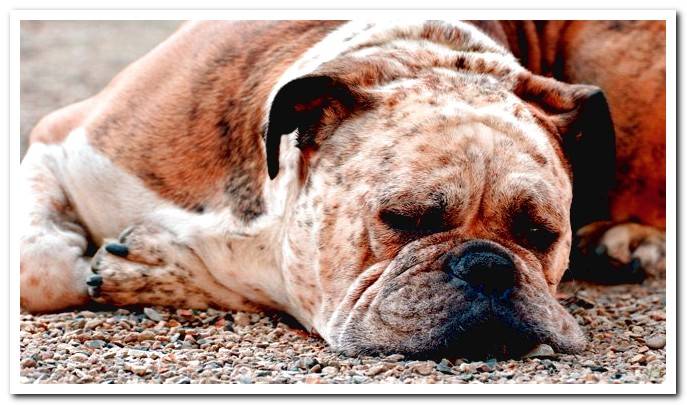
Sedentary life and bad eating habits also take their toll on our furry. In fact, obesity in dogs is an increasingly frequent problem.
Let’s learn how to know if our dog is overweight or if he is overweight, how to assess the situation and know the origin of the problem and of course, tips to fix it.
Index of contents
- 1 How to Spot Obesity in Dogs: Initial Symptoms
- 2 Consequences for your health
- 3 Causes that lead to obesity
- 4 What to do if you think your dog is overweight?
- 5 Tips to avoid or reduce obesity
How to Spot Obesity in Dogs: Initial Symptoms
Today obesity is the most frequent nutritional disorder among domestic dogs. It is estimated that in Spain, between 20 and 35% suffer from it. In order to avoid it, you must learn to spot the first signs of obesity and remedy them as soon as possible.
How to do it? The first step is to find out what weight a dog should have based on its breed and other characteristics such as its age or size. Once you have this information clear, check how much your furry weighs.
If it exceeds the reference you achieved by more than 20% … put a stop to it. In that case it is no longer worth saying that “the dog is strong” or that “he is only a few extra pounds”. The reality is that you can have an obesity problem that ends up taking its toll.

Consequences for your health
You should know that canine obesity has really harmful effects on the dog’s health. It not only alters your metabolism, it also favors the appearance of numerous problems and diseases.
Among the most common, the following stand out:
- Diabetes
- Pancreatitis
- Respiratory, skin, kidney, joint, and bone problems
- Heart disease
Added to this is a lower immune resistance and movement difficulties. It has been shown, in fact, that dogs with obesity live less than those that maintain their ideal weight.
Causes that lead to obesity
The main cause of canine obesity is the excessive intake of calories, which are stored by the body in the form of fats. There may be several reasons for this: the dog may be overeating or the food it eats may not be adequate.
There is also other influencing factors. For example:
- Dog’s age A puppy is growing and therefore needs a higher calorie intake than an adult. Therefore, we cannot feed them the same way.
- Metabolic imbalances or diseases. Some food-related disorders and disorders may also be behind canine obesity.
- A sedentary lifestyle. Lack of daily exercise causes the dog to accumulate more calories than it needs. Going for a walk and motivating him to exercise is essential.
- Anxiety. This can also be an important factor, since it makes the dog eat more and faster, gobbling up the food.
And not only that. Obesity tends to affect females more than males and also certain breeds of dogs. Those most likely to gain weight are Labrador dogs, the Cocker Spaniel, Dachshund and the Basset Hounds, among others.

What to do if you think your dog is overweight?
If you think that your furry has an obesity problem, the first step is to go to the vet so that he can examine him well, weigh him and see what may be causing this disorder.
The specialist will look for the eventual or pathological causes of this weight gain and will give us guidelines so that your canine friend has a proper diet and a healthier lifestyle.
When the dog reaches his ideal weight it is important that you continue with the veterinary advice, so that he does not regain the lost weight. Yes, they also do not get rid of the known rebound effect.
Tips to avoid or reduce obesity
Keep in mind that canine obesity is directly related to inappropriate habits, for which we are responsible.
It is not a question of blaming yourself, but it is necessary that you become aware of what is happening and correct the bad routines. Some behaviors to avoid are:
- Let him eat as much as he wants, without controlling the speed or the limit of what he ingests.
- Give him food that is inappropriate for his race, size, or age.
- Add your leftovers to your diet.
- Give the food concentrated in a single dose, instead of dividing it into three or four throughout the day.
Falling into these mistakes is a very common thing and, if kept over time, can lead to canine obesity. In addition to the change in the way you feed your furry, we also recommend that you increase his physical activity through games or exercises.
We know it is a long process, in which you must have patience, but think that the health of your furry is at stake. If you are constant you will be helping him feel better, getting him time and quality of life.
